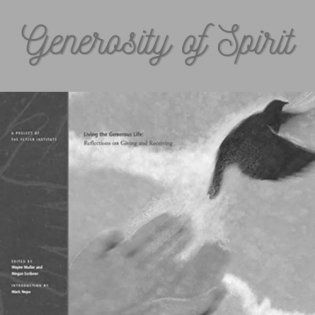Environmental Stewardship
Through folktales from around the world, learners explore humans' important role as caretakers of the Earth and the role of civil society in environmental stewardship.
The learner will:
- identify the historical and geographic settings of folktales.
- identify the message and connections to philanthropy.
Youth access to these folktales (Learning to Give has permission to make these folktales available online to readers):
Invite a representative of an environmental nonprofit to speak to the group and explain their mission. Ask about their focus related to local, national and international giving. If the learners wish to support this group or another, a fundraiser may be planned.
- "The Brave Little Parrot." Martin, Rafe. The Hungry Tigress: Buddhist Legends and Jakata Tales. Berkeley, California: Parallax Press, ©1990. Used with the permission of Parallax Press. www.parallax.org "Reprinted from The Hungry Tigress (1990) by Rafe Martin with permission of Parallax Press, Berkeley, California."
- "Kogi the Priest." Martin, Rafe. The Hungry Tigress: Buddhist Legends and Jakata Tales. Berkeley, California: Parallax Press, ©1990. Used with the permission of Parallax Press. www.parallax.org "Reprinted from The Hungry Tigress (1990) by Rafe Martin with permission of Parallax Press, Berkeley, California."
- Maathai, Wangari. "Nobel Peace Prize Acceptance Speech,"
- "The Secret of Dreaming." Poulter, Jim and illustrated by Mark Smith. The Secret of Dreaming: The Story of Why the Land Is Sacred and Why Man Must Be Its Caretaker. Templestowe: Victoria: Red Hen, ©1988. Used with the permission of Jim Poulter. http://www.jimpoulter.com/
Instructions
Anticipatory Set:
Define the terms "environmentalism" and "stewardship" and talk about how they relate to philanthropy (giving time, talent, or treasure and taking action for the common good).
Notes about place: The first story, "The Secret of Dreaming" is an Australian Aboriginal folktale of creation. On a map, locate Australia’s absolute location (longitude and latitude) and relative location (general descriptors of where the place is located). Describe Australia's physical characteristics and human characteristics.
Read "The Secret of Dreaming" together and discuss the message and connection to philanthropy.
- What terms do the Aboriginals use for God?
- Why did the Spirit of Man decide that he must protect the Secret of Dreaming (creation)?
- Why must the Spirit of Man be the Caretaker of the land?
- In what way would being a caretaker of the land be an act of "giving"? Why is it important that everyone share this responsibility?
- Although the folktale very heavily depends on Australian Aboriginal culture, what in the story has universal appeal?
A very different look at stewardship can be seen in the Buddhist folktale, "The Brave Little Parrot." Read the story together and discuss the message and connection to philanthropy.
- Although animals are not usually seen as caretakers of the land, the little parrot showed care, courage, giving and perseverance in its actions. Discuss examples of this.
- Discuss what we can learn from this speech of the parrot: "I don't need a great, shining eagle," coughed the little parrot, "to give me advice like that. My own mother, the dear bird, might have told me such things long ago. Advice! (cough, cough), I don't need advice. I just (cough) need someone to help."
- What environmental caretaking is promoted in the folktale?
Before reading the Japanese folktale "Kogi the Priest," have the learners research Buddhist teachings on animals and respect for life.
Read the story together and discuss the message and connection to philanthropy.
- Why do you think Eizo became the great whale after firing at the whale and slipping on the deck?
- The Nagas watched out for the Earth. How did the Nagas retaliate towards humans when they behaved incorrectly?
- Explain this passage: "They guard this treasure of Perfect Wisdom. They keep it safely for us, until the day when we shall be wise and humble enough to receive our inheritance."
- How did Kogi’s decision align with his Buddhist faith?
In small groups, learners brainstorm ideas around environmental stewardship on a web. They may begin with the big idea in the center or a category such as air or water. In radiating circles around the center idea, they describe the problem, causes, solutions, and actions to take care of the environment.
Define the term civil society as a community of citizens linked by common interests and collective activity. Since we share the common interest of a healthy environment, citizens and organizations collectively organize to take action.
Ask learners to research an organization in the civil society that works towards environmental stewardship. They may choose to support their work by changing behavior, donating funds, or advocating for the organization.
Philanthropy Framework
-
Strand PHIL.II Philanthropy and Civil Society
-
Standard PCS 02. Diverse Cultures
-
Benchmark HS.1 Analyze philanthropic traditions of diverse cultural groups and their contributions to civil society.
-
-
Standard PCS 03. Philanthropy and Economics
-
Benchmark HS.4 Give examples of how civil society sector giving by individuals and corporations can impact communities.
-
Benchmark HS.5 Give examples of stewardship decisions throughout history and in current events.
-
-
Standard PCS 05. Philanthropy and Government
-
Benchmark HS.5 Identify and discuss civil society sector organizations working to build community/social capital and civil society resources.
-
-
-
Strand PHIL.III Philanthropy and the Individual
-
Standard PI 01. Reasons for Individual Philanthropy
-
Benchmark HS.3 Describe and compare stewardship in a variety of cultural traditions.
-
-
